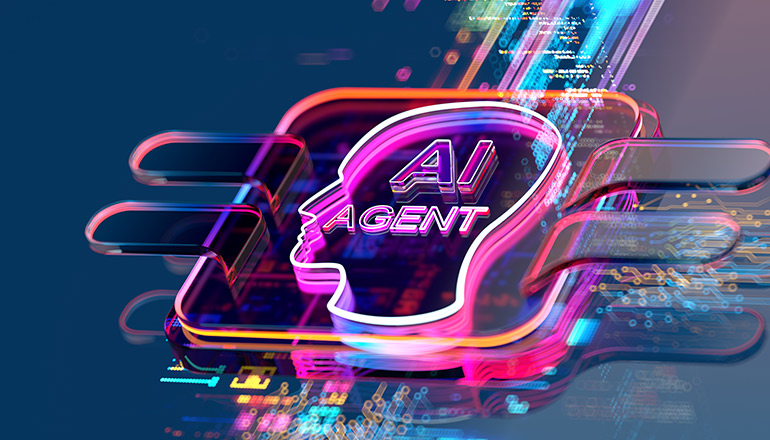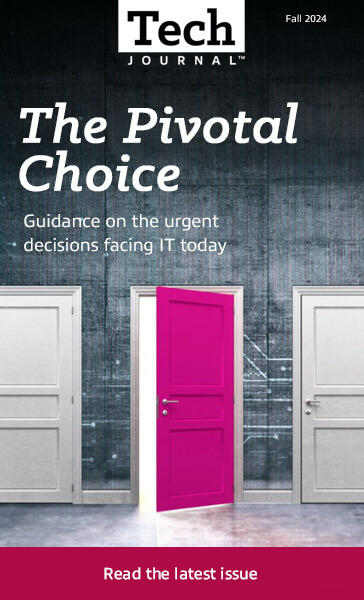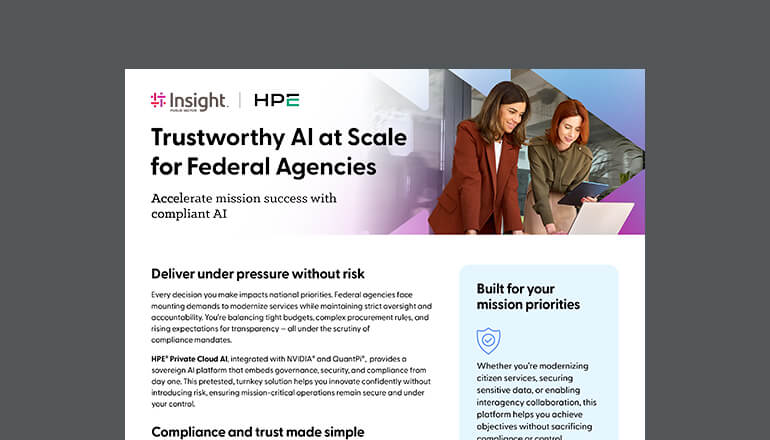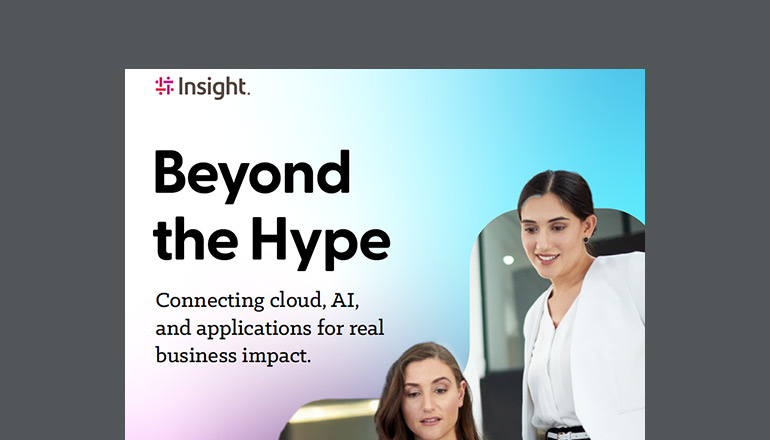Article Redefining IoT: An Intro to Connected Solutions
It takes more than smart devices to become a smart organization. The true power of the Internet of Things (IoT) is in the connections.
By Jeff Dodge / 1 May 2020 / Topics: Artificial Intelligence (AI) Devices Analytics Intelligent edge
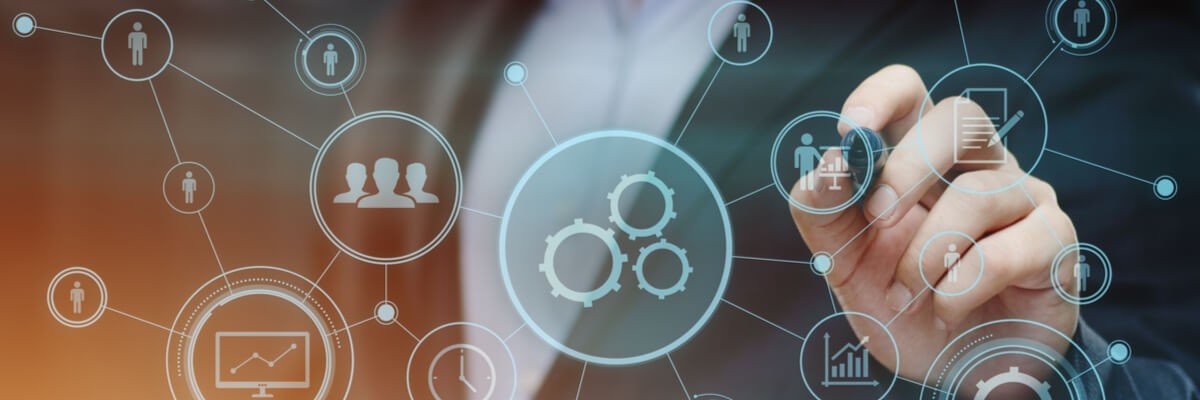
You don’t have to be in the IT industry to know there’s a lot of buzz around the internet of things — particularly when it comes to leveraging data to promote health and safety in public spaces. But when we talk about “IoT” solutions, what do we really mean?
Most people have heard the term, but the truth is, even those of us who spend most of our day talking about IoT rarely call it by name. The reason for this is simple. When the average CXO, business owner, manager or employee hears about the “internet of things,” they’re hearing technical jargon. It doesn’t call to mind any particular challenge or describe a tangible solution, so it’s easy to disregard as complex or irrelevant.
But when these same individuals describe the types of technology-related outcomes they’re looking for — instant access to information that can help them identify and resolve everyday challenges — ultimately, they’re talking about IoT.
So why the disconnect?
What is IoT?
IoT refers to the vast network of objects and devices which collectively generate, process and share data as part of their function. To put it simply, any “thing” that connects to the internet is part of the internet of things.
The phrase itself is largely attributed to tech pioneer, Kevin Ashton, who described the potential for a network that could connect not just people, but the objects around them back in 1999. But while usage of the term “IoT” has slowly grown in the IT community, it’s never really caught on with the general public.
By comparison, related words like “smart device” have quickly become mainstream. Smart phones, wearables, televisions, virtual assistants and more have not only been adopted into our homes and businesses, but also into our daily vocabulary. A quick look at Google Trends shows the degree of separation — on any given day, terms such as smartwatch and smart home are queried at more than double the rate of terms like IoT.
The reality is, it’s much easier to identify with the tangible devices and outcomes that connect through the internet of things, than it is with the concept itself — and this makes sense.
But the downside of focusing on smart devices as individual solutions, rather than through the collective lens of the IoT, is that together, these systems have the potential to become much more than the sum of their parts.
Thinking beyond smart devices
By the end of 2019, there were an estimated 7.6 billion active IoT devices in use around the world. And forecasts suggest this number will grow to more than 24.1 billion by 2030.
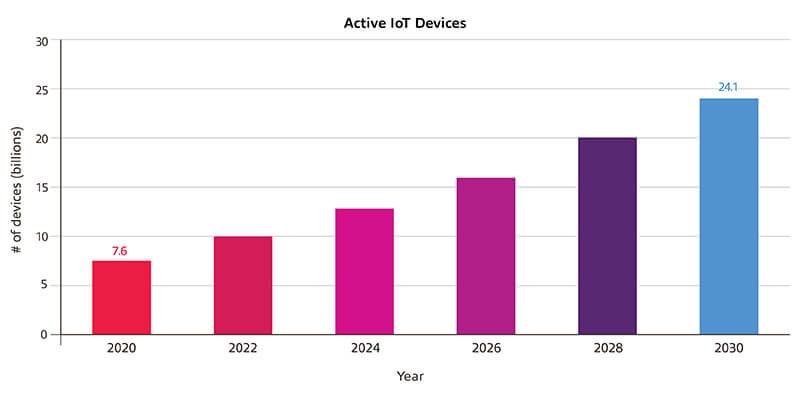
With new devices continuously being developed and new applications being explored in every industry, organizations now have access to a nearly endless selection of smart technologies and applications. But simply leveraging independent point solutions to address each individual business challenge doesn’t provide much value overall. And it can often lead to overly complex, disjointed or redundant systems.
The difference between an IT strategy focused on smart devices and one that leverages the true power of the IoT is in the ability to connect, share and aggregate information in more holistic, meaningful ways.
At Insight, this is why we refer to our IoT work as Connected Solutions. This terminology not only describes the technologies we deploy, but also serves as a constant reminder of the collective value of data and the visibility it enables. The “connected” descriptor drives our focus on not only building smart systems but bringing these systems together to paint a bigger picture.
Properly managed, connected IoT solutions can help inform critical decisions and optimize processes across your business. But it takes more than just devices alone to achieve these outcomes.
The building blocks of IoT
Depending on the ultimate function they serve, IoT systems are generally categorized as consumer IoT, enterprise IoT and government or public sector IoT — some have gone on to classify even more specific subcategories like Industrial IoT (IIoT) and the Internet of Military Things (IoMT).
But regardless of name, industry or function, in the most simplified form, these connected solutions are made up of the same basic components:

It’s this connection between devices, the cloud and data platforms that empowers modern organizations to collect, process and share business-critical data in real time, giving users the tools to make decisions and complete tasks with confidence.
Connected business outcomes
The modern proliferation of smart technology means there’s no shortage of relatively simple cameras, sensors and other readily available systems can now be combined to form a more complete picture of operations, customers and products. The challenge is in how to do so.
As of 2019, IoT investments were being driven by a broad range of goals, including improved security, efficiency, improved uptime and faster response to customer needs.
In 2020, the emergence of COVID-19 has driven new demands around public health and safety, with many organizations exploring ways to leverage smart devices, cameras and machine learning to enable a safe return to work.
But regardless of the outcome you’re looking to achieve, there are a few underlying technologies that can help to improve visibility and drive stronger decision-making.
Computer vision
- Cameras, sensors and machine learning combine to identify anomalies or state changes.
- Sample use cases include people counting, distance measuring, object detection for safety equipment or notification of activity in restricted areas.
Vibration and auditory detection
- Sensors measure for signs of mechanical wear and tear, laying the foundation for predictive maintenance.
- Sound triangulation provides data for incident alert and response.
Environmental telemetry
- Temperature and humidity sensors are used to monitor and adjust conditions with precision.
- Pressure and stress monitors provide data for predictive maintenance on equipment and infrastructure.
Programmable Logic Controller (PLC) data
- Rugged, adaptable controllers automate process control and deliver intelligent insights.
Scenario: The connected restaurant
It’s one thing to hear about all these devices and sensors sharing data, but how do all these complex elements come together to simplify things in the real world? Consider a restaurant manager who, in addition to guaranteeing product quality and food safety, now needs to ensure a healthy environment for staff and customers.
In compliance with food safety regulations, she has to maintain consistent documentation of food temperature conditions. But a simple mechanical or employee error can easily lead to spoilage, waste, fines or worse — all of which costs her restaurant unnecessary dollars. By leveraging data from connected sensors and cameras, it’s easy for her to take preventive measures, replacing the manual recording process with real-time temperature monitoring from arrival to storage. Sensors can trigger notifications if a freezer door is left open, while data from kitchen equipment can automatically trigger upcoming maintenance.
Outside the kitchen, cameras and occupancy sensors can help waitstaff serve guests more safely and efficiently. Object-detection models can be used to encourage social distancing or compliance with mask-wearing policies while keeping staff informed of demands at both the front and back of the house. Temperature sensors can improve confidence in guests by helping to flag for early symptoms while maintaining ideal dining conditions.
The more connected the business becomes, the safer, cleaner and more efficient it has the potential to be.
So, if these devices and solutions are readily available, and the potential benefits are so compelling, why doesn’t every restaurant, factory or hospital operate this way?
The answer comes back to connections. For many organizations, even when the devices and the data are in place, managing all of this information in a cohesive, actionable way is often challenging. Fortunately, there are a growing number of offerings on the market today which can help organizations begin to unify and aggregate data in meaningful ways. In part two of this series, I’ll provide an overview of these solutions, including what it takes to plan, deploy and manage each approach.
As you begin to think about integrating smart technology into your own organization, remember that even in our current landscape, the most important consideration is the end user. Start your path to a more connected business by considering what the user needs to know in order to make a better decision or to achieve a better outcome. And, equally important, how you can reach the right user, at the right time, with only the information they need.
When you can answer these questions, you’ll be ready to leverage the power of the IoT to rise above the world of smart devices to become a truly connected organization.
